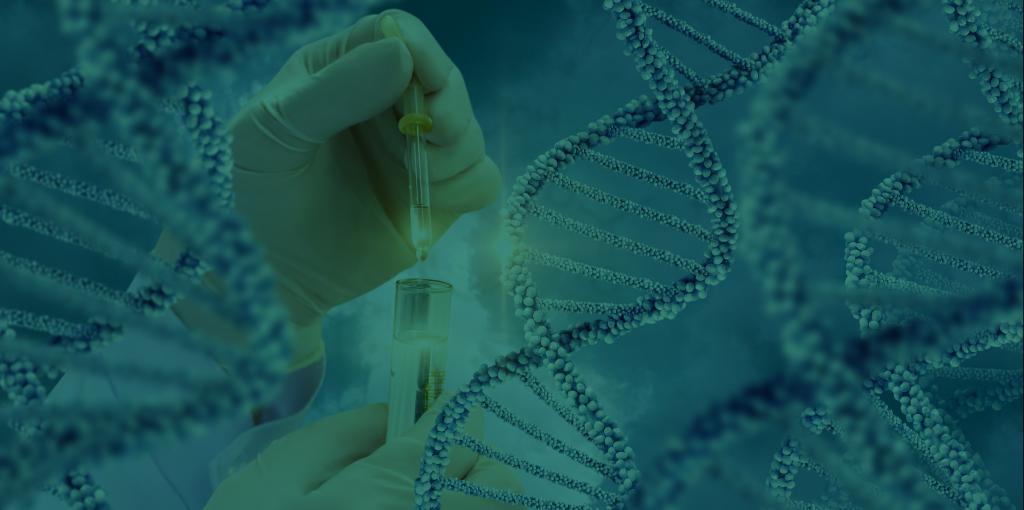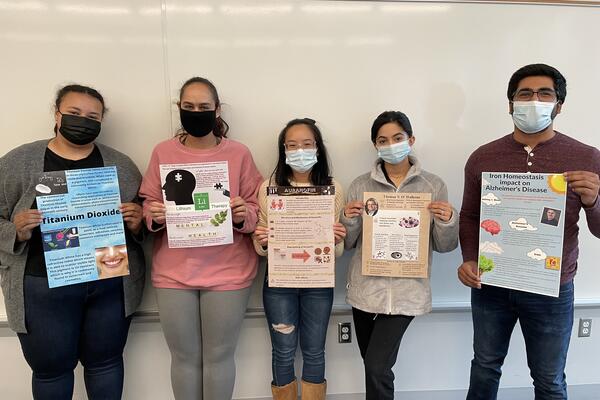Admission CTAs
Mason chemistry students enhance science communication skills with infographics
Innovative infographic assignment strengthens creativity and communication skills of Mason chemistry and engineering majors.
In the scientific realm, discoveries and research are traditionally shared through papers and poster sessions. This fall, through an immersive learning experience, Mason chemistry students demonstrated their ability to break down scientific principles and research into simpler ideas and share and critique these concepts in a concise manner using a modern form of scientific storytelling – the infographic.
Rebecca Jones, chemistry and biochemistry professor, gave students in her Chem 271 (General Chemistry for Engineering) and Chem 446 (Bioinorganic Chemistry) classes this alternative assignment. The students' final infographic-based presentations offered a gallery walk which artfully explained important chemistry and biochemistry concepts and memorably highlighted scientific thought leaders.
“I included these semester-long creative projects in my chemistry classes, challenging students to visually communicate a chemical idea or concept of interest." said Jones. In addition to practicing visual science communication, students also learned about their topic, experienced peer review, and analyzed varied sources.
Students chose from a list of 95 different elements, prominent chemists, or selected a chemical idea or concept like fuel cells, composite countertops, artificial skin, solar panels, or surgical glue as their infographic focus.
For Zarwa Ashraf, a senior chemistry major with a biochemistry concentration, the assignment was a chance to apply her communication skills in a different way.
“I have always used PowerPoint slides with bullets or Canva for social media posts, but to narrow all we wanted to say into one graphic was an interesting challenge,” Ashraf said. “This was a really fun way to sharpen my communications skills while learning a lot about a broad number of areas.”
Paige Holland, a chemistry major with a forensic science minor explained, “The hardest part of the project was to make sure you had key points, but not so much info to overwhelm the reader, especially if they don’t have a scientific background.”
Students participated in peer review and some also received feedback on their posters from a communications professional in the College of Science. If other educators wish to incorporate this concept in their classrooms, Jones highlights the innovative learning approach in a book chapter which reviews the framework and logistics of the assignments, assessment and student feedback, along with lessons learned.
Gaston Sanchez, a senior chemistry major with a biochemistry concentration thought this was a great course to take before he pursued medical school, a popular pathway for many Mason chemistry and biology majors.
A graduate of local Annandale High School, Sanchez chose Mason to obtain his undergraduate degree because it was both close to home and Washington, D.C. He values the diversity of this area and on this campus.
“This bioinorganic course is the total opposite of what you learn when you start pursuing your degree," Sanchez said. "You learn about breaking the scientific laws of the things you think you know. There’s a lot of information I can use in real world experiences.”
Sanchez’s infographic project focused on lead. “I found the reason why we stopped using lead paint but I also learned the advantages. Lead can be used in medical treatments and because it prohibits moisture, it’s great for something like ships,” he said.
Graduating senior and chemistry/biochemistry major, Huy Minh Tran who aspires to attend medical school for internal medicine or pediatrics, chose to research Iodine deficiency and thyroid disorder because he saw children affected by this condition when he was growing up in Vietnam.
"Iodine can’t synthesize itself and contributes to a major public health problem in developing countries.” Tran said. “Even the small bit of iodine in salt can improve cognitive function.” His project also highlighted various treatments for the iodine deficiency condition.
Tran also enjoyed meeting people in these active learning classes at Mason. “It’s a great way to get to know each other as we learn together. I’ve made great friends here while pursuing my scientific interests.” All the students agreed it was a fun way to end the semester.

